In Flanders Fields
"Flanders" is a part of Northern Belgium; many other happenings including fierce battles and relentless fighting, occurred there during World War I.
In Flanders Fields
"Flanders" is a part of Northern Belgium; many other happenings including fierce battles and relentless fighting, occurred there during World War I.
Flanders fields
"Flanders" is a part of Northern Belgium; many other happenings including fierce battles and relentless fighting, occurred there during World War I.
Wigent, William David, Burton David William Housel, and Edward Harry Gilman. Modern Filing and How to File: A Textbook on Office System. Rochester, N.Y.: Yawman & Erbe Mfg. Co., 1916. http://archive.org/details/modernfilingate02compgoog.
Further, Deutsch triedto instill a certain chronological, geographical and thematic method of organization. Butthis arrangement is also a stumbling block to anyone who might want to use it, includingDeutsch. ACCUSATIONS AGAINST THE JEWS (489 cards), for instance, presents an array ofevents organized not by date but in a surprisingly unsystematic alphabetical order. Insteadof indicating when such accusations were more or less prevalent, which could only beindicated by reorganizing cards chronologically, the default alphabetical sorting, whichshows instances in disparate locations like London (in May, 1921) alongside Sziget,Hungary (from 1867), gives the impression that such anti-Jewish events were everywhere.And even this organization was chaotic. The card on Sziget is actually listed under‘Marmaros’, the publication with which the card’s text began, and an immediately pre-ceding card is ordered based on its opening ‘A long list of accusations . . . ’, not thereference to its source: Goethe’s Das Jahrmarketsfest zu Plundersweilern.
Lustig provides a description of some of the order of Gotthard Deutsch's zettelkasten. Most of it seemed to have been organized by chronological, geographical and thematic means, but often there was chaos. This could be indicative of many things including broad organization levels, but through active use, he may have sorted and resorted cards as needs required. Upon replacing cards he may not have defaulted to some specific order relying on the broad levels and knowing what state he had left things last. Though regular use, this wouldn't concern an individual the way it might concern outsiders who may not understand the basic orderings (as did Lustig) or be able to discern and find things as quickly as he may have been able to.
Elliott, P., Eales, O., Bodinier, B., Tang, D., Wang, H., Jonnerby, J., Haw, D., Elliott, J., Whitaker, M., Walters, C., Atchison, C., Diggle, P., Page, A., Trotter, A., Ashby, D., Barclay, W., Taylor, G., Ward, H., Darzi, A., … Donnelly, C. (2022). Post-peak dynamics of a national Omicron SARS-CoV-2 epidemic during January 2022 [Working Paper]. http://spiral.imperial.ac.uk/handle/10044/1/93887
Jr, D. G. M. (2021, June 6). Sigma Phi-ing Monkeyshines at the W.H.O. Medium. https://donaldgmcneiljr1954.medium.com/sigma-phi-ing-monkeyshines-at-the-w-h-o-35dcedfc9e33
Karatayev, Vadim A., Madhur Anand, and Chris T. Bauch. ‘Local Lockdowns Outperform Global Lockdown on the Far Side of the COVID-19 Epidemic Curve’. Proceedings of the National Academy of Sciences 117, no. 39 (29 September 2020): 24575–80. https://doi.org/10.1073/pnas.2014385117.
Deaths registered weekly in England and Wales, provisional—Office for National Statistics. (n.d.). Retrieved 31 July 2020, from https://www.ons.gov.uk/peoplepopulationandcommunity/birthsdeathsandmarriages/deaths/bulletins/deathsregisteredweeklyinenglandandwalesprovisional/weekending17july2020
Kulu, H., & Dorey, P. (2020). Infection Rates from Covid-19 in Great Britain by Geographical Units: A Model-based Estimation from Mortality Data [Preprint]. SocArXiv. https://doi.org/10.31235/osf.io/84f3e
Petersen, E., Koopmans, M., Go, U., Hamer, D. H., Petrosillo, N., Castelli, F., Storgaard, M., Khalili, S. A., & Simonsen, L. (2020). Comparing SARS-CoV-2 with SARS-CoV and influenza pandemics. The Lancet Infectious Diseases, 0(0). https://doi.org/10.1016/S1473-3099(20)30484-9
Liu, Andrew, and Mason A. Porter. ‘Spatial Strength Centrality and the Effect of Spatial Embeddings on Network Architecture’. Physical Review E 101, no. 6 (9 June 2020): 062305. https://doi.org/10.1103/PhysRevE.101.062305.
vestibule
"A chamber or hall immediately between the entrance-door and the interior of a building or house, to which it gives admittance; an ante-chamber, entrance-hall, or lobby" (OED).
https://www-oed-com.jpllnet.sfsu.edu/view/Entry/222903?rskey=RAUZwy&result=1#eid

shrubbery
"A plantation of shrubs; a plot planted with shrubs" (OED).
https://www-oed-com.jpllnet.sfsu.edu/view/Entry/178960?redirectedFrom=shrubbery#eid

copse
"A thicket of small trees or underwood periodically cut for economic purposes" (OED).
https://www-oed-com.jpllnet.sfsu.edu/view/Entry/41274?result=2&rskey=pfse77&
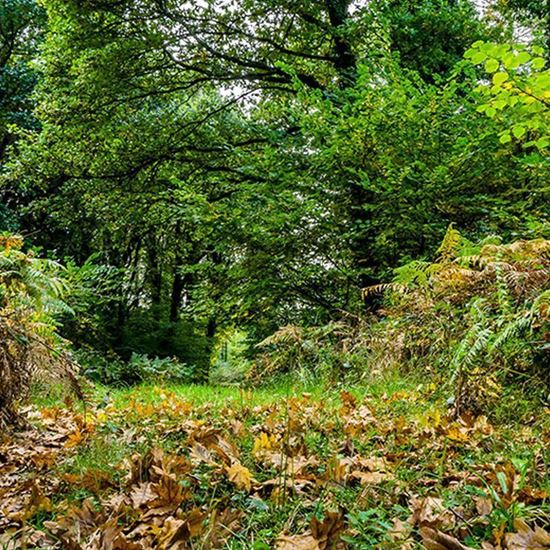
Gracechurch Street
Gracechurch Street is a main road in London and is historic for its shops and restaurants and serves as an entrance to Londons Leadenhall Market which has been open since the 14th century.
https://janeaustensworld.wordpress.com/tag/gracechurch-street/

Hertfordshire
 County directly North of London
County directly North of London
Gretna Green
"In reference to the custom by which runaway couples from England have been married in Gretna Green according to Scots law, without the parental consent required in England for those who have not attained their majority" (OED).

Clapham
District in South-West London (OED).
Lambton
The imaginary village and former residence of Mrs. Gardiner (Pemberley).
East Bourne
Eastbourne is a town on the Southeast coast of England. A seaside, resort town similar to Brighton.
 Location of Eastbourne in the U.K.
Location of Eastbourne in the U.K.
Derbyshire
A county in the East Midlands of England. Jane Austen revised Pride and Prejudice, while she stayed in Bakewell, Derbyshire in at year of 1811.
all meeting frequently at St. James’s
The Palace of St. James was where the royals like King George III lived prior to Buckingham Palace. They would host balls in celebrations of "official nativities of the King and Queen" (Thompson) where people of Sir William's rank and higher attended. Sir William is referencing an earlier scene in chapter six asking Darcy if he ever danced at St. James's. (http://www.jasna.org/persuasions/on-line/vol33no1/thompson.html)
 (https://janeaustenslondon.files.wordpress.com/2013/04/st-jamess-palace-1-copy.jpg)
(https://janeaustenslondon.files.wordpress.com/2013/04/st-jamess-palace-1-copy.jpg)
Pemberley
Jane Austen visited Chatsworth in 1811; it is believed that she used the estate for the inspiration of Pemberley. In chapter 42, Chatsworth is mentioned as one of the estates that that Elizabeth and the Gardiners visit before arriving at Pemberley,“…they were now to spend a few days, was probably as great an object of her curiosity as all the celebrated beauties of Matlock, Chatsworth…".
http://jasna.org/austen/ https://www.chatsworth.org/news-media/chatsworth-on-film/pride-and-prejudice/
 Pictured above is Chatsworth House, the inspiration for Pemberley and where they filmed the 2005 Pride and Prejudice starring Keira Knightley.
Pictured above is Chatsworth House, the inspiration for Pemberley and where they filmed the 2005 Pride and Prejudice starring Keira Knightley.
her return through London, and there relate her journey to Longbourn
Journey from London to Longbourn:

the Lakes
"The land of lakes; spec. the region of the English lakes, consisting of parts of Cumbria and Lancashire" (OED).

"The Lake country is in the far northwest of England" (https://www.pemberley.com/janeinfo/ppjalmap.html#longbourn))
Lambton
The small village of Lambton is believed to be based on Bakewell, a town located three miles from Chatsworth and where Austen revised Pride & Prejudice in Bakewell’s Rutland Arms Hotel.
http://www.orchard-gate.com/lambton.htm

Blenheim
"The name of Blenheim Place near Woodstock, Oxfordshire, a noble palace of the dukes of Marlborough. King Ethelred is said to have called a council here , and Alfred the Great to have translated "Boethius de Consolatio Philosophiae" at this place. Here was a magnificent royal palace which was the favourite retreat of several kings of England at different periods till the reign of Charles the First when, during the civil commotions, it was reduced almost to ruins. It was not, however entirely demolished till after the building of Blenheim, when every trace of the ancient edifice was removed and two elm trees were planted on its seite."
Matlock
" A village seated on the river Derwent. It has two baths, whose waters are warm, and the place is much frequented in the bathing season. It is an extensive straggling village, built in the romantic style, on the steep side of a mountain, the houses rising regularly one above another, form the bottom nearly to the summit. There are good accommodations of the company who resort to the baths; and the poorer inhabitants are supported by the sale of petrifications, crystals and other curiosities of nature. Notwithstanding the rockiness of the soil, the cliffs of the rocks produce an immense number of trees, whose foliage adds greatly to the beauty of the place."
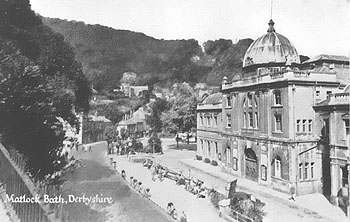

Chatsworth
"The model for Pemberley, Mr. Darcy’s home in Pride and Prejudice, and the great house served as Pemberley for the 2005 film adaptation. The home of the Dukes of Devonshire, Chatsworth dates from the Elizabethan era when Bess of Hardwick and William Cavendish, the treasurer of the Chamber to Henry VIII, acquired the land. The exterior was rebuilt in the early 1700’s by William, the 1st Duke of Devonshire (Bess’s son). He built it wing by wing until some of the Elizabethan structure was buried deep within its new walls.
The first duke also renovated the garden, making it a complement to the house and causing Daniel Defoe to call it “the most pleasant garden and the most beautiful palace in the world.”<br>
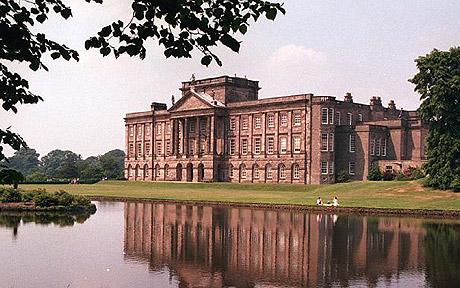
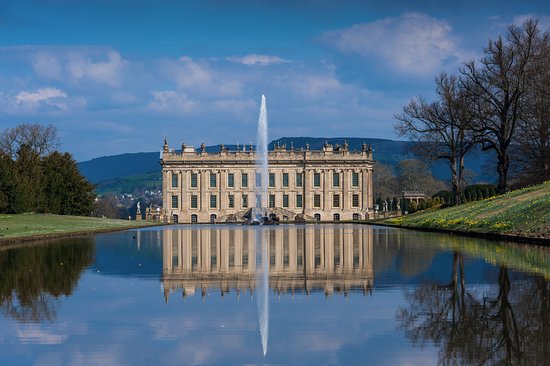
Dovedale
"A valley in the Peak District of England. The land is owned by the National Trust, and annually attracts a million visitors.The valley was cut by the River Dove and runs for just over 3 miles (5 km) between Milldale in the north and a wooded ravine near Thorpe Cloud and Bunster Hill in the south. In the wooded ravine, a set of stepping stones cross the river, and there are two caves known as the Dove Holes."

Derbyshire
"A county of north central England; county town, Matlock"(OED).
"It is also,a county in the East Midlands of England. A substantial portion of the Peak District National Park lies within Derbyshire, containing the southern extremity of the Pennines range of hills which extend into the north of the county.
"

Kenelworth
Located about five miles from Warwick Castle, Kenilworth Castle is another medieval fortress, again visited by the Austen family in 1806; in an August 13, 1806 letter, Austen's mother writes, 'We have seen the remains of Kenilworth, which afforded us much entertainment' (William Austen-Leigh, Jane Austen: Her Life and Letters, 197). 
Brighton
An 1825 map of Brighton.

Aside from being a popular place for sea-bathing, Brighton was known for its militia camps (L.F. Salzman, ed., "The Borough of Brighton").
Warwick
Francis Harding, "Warwick Castle," 1764
 Warwick Castle, located in Warwickshire, is a notable medieval fortress. Jane Austen and her family visited the castle in August of 1806 (William Austen-Leigh, Jane Austen: Her Life and Letters, 196-197).
Warwick Castle, located in Warwickshire, is a notable medieval fortress. Jane Austen and her family visited the castle in August of 1806 (William Austen-Leigh, Jane Austen: Her Life and Letters, 196-197).
Pemberley
"Imaginary state in Derbyshire"
Hunsford
Fictional home of Mr. Collins and Charlotte, located near Rosings Park in Kent. Also near Westerham.
Image is of the Old Rectory at Heigh in Rutland from the set of the 1995 BBC version of Pride & Prejudice. 
Hertfordshire
"A county of south-eastern England, one of the Home Counties; county town, Hertford" (OED).

Kent
"A county of the south-eastern coast of England; county town, Maidstone" (OED).
.jpg&action=MediaGallery)
Rosings
Fictional estate of Lady Catherine located in Kent, near Hunsford Parsonage.
Image of the set of the 1995 BBC version of Pride & Prejudice.

Parsonage
"The church house provided for a rector...the house of any beneficed member of the clergy of the Church of England; the residence of any minister of religion" (OED).

Ramsgate
A seaside town roughly 80 miles from London in Kent, the southeast of England.

Ramsgate Sands (Life at the Seaside), William Powell Frith, 1852.
Derbyshire
Derbyshire is a county located in the East Midlands (https://www.visitengland.com/things-to-do/derbyshire).

Hertfordshire
Hertfordshire is a county located in the South East of England. (Tom Williamson, Origins of Hertfordshire, 4). It is approximately 30 miles from London to the south, as can be seen in the second photo.


town
"In apposition to a place name, as London town" (OED).
Meryton assembly
"Where the militia regiment is quartered for a time." Meryton is an imaginary town located near Longbourn and Netherfield in Hertfordshire. (http://www.pemberley.com/janeinfo/ppjalmap.html)
Netherfield,
The 1995 BBC Pride and Prejudice television adaption used the historical Edgcote House as Netherfield. "Edgcote House, located in southwest Northamptonshire, is the setting for Mr. Charles Bingley’s leased estate. The building was built in the 18th century, and was at one time owned by Anne of Cleves, who was Henry VIII’s fourth wife, and one who was actually allowed to keep her head!" (https://austenauthors.net/a-tour-of-estate-houses-used-in-pride-and-prejudice/)
Grosvenor street
Grosvenor Street was a respected street in London. In 1735, some of the houses on this street were owned by Dukes, Earls, Ambassadors and Churchmen. Living on a street with other people with titles such as these gave the person living there a certain status of upper quality (Sheppard, Grosvenor Street: Introduction, 33-35).
Lakes
"The English Lake District, a cultural landscape in North West England that inspired Romantic poets and conservationists including William Wordsworth..." ("English Lake District welcomed...")
St. James’s
It has been the area where important historic events happened. It is also the official residence of the Sovereign. (The British Monarchy)
Grosvenor Street
A fashionable street in the Mayfair neighborhood of London's West End--where 'society'dwelt. The most expensive, and desirable street is Park Street, and Grosvenor Street intersects it. (Pool What Austen Ate... 28, 51).
Hunsford
Hunsford: a fictional location in Kent; where Mr. Collins is the rector. ("Important Places in Pride and Prejudice and Jane Austen's Life")
Kent
Kent: county in South/East England along the coast, opposite of Dunkirk, London is slightly Northwest. (Google Maps)
Hertfordshire.
Hertfordshire: county in southern England, just north of London. (Google Maps)
Hunsford, near Westerham, Kent
 This photo shows the map of England where Kent is located. This is where Mr. Collins was at during the time of his letter.
This photo shows the map of England where Kent is located. This is where Mr. Collins was at during the time of his letter.
Devonshire
Devonshire is now more commonly known as Devon.
"Devon, administrative, geographic, and historic county of England. It forms part of the South West (or Cornish) Peninsula of Great Britain and is bounded to the west by Cornwall and to the east by Dorset and Somerset. The Bristol Channel lies to the north, and the English Channel abuts it to the south" (Devon, Encyclopedia Britannica, Web).
Sussex
“Sussex, historic county of southeastern England, covering a coastal area along the English Channel south of London. For administrative purposes, Sussex is divided into the administrative counties of East Sussex and West Sussex and the unitary authority of Brighton and Hove” (Sussex, Encyclopedia Britannica, Web).

Plymouth
"Plymouth is a market town seated between the mouths of the rivers Plym and Tamar, in a bay of the English channel ,called Plymouth Sound, the Plym passing by one side of the town ,as the Tamar does on the other" (John Malham, Plymouth, Devonshire p 1).
"In 1801, at the time of the first census Plymouth old town had a population of 19,000. Devonport had 23,000 and had outgrown the original town. The end of the war with France in 1815 was catastrophic for Plymouth as many men were laid off from the dockyard. However Plymouth eventually recovered" (Tim Lambert, A Brief History of Plymouth, England, p 1).

Norland
A fictional place located in Sussex.
Portman Square
Portman Square, built in 1764, catered to and drew in very wealthy families. It is known as one of the most beautiful and biggest squares in London. In 1822 there were approximately 15 members of the nobility living there. At this time, it was one of the most distinguished neighborhoods in London. http://www.british-history.ac.uk/old-new-london/vol4/pp406-441

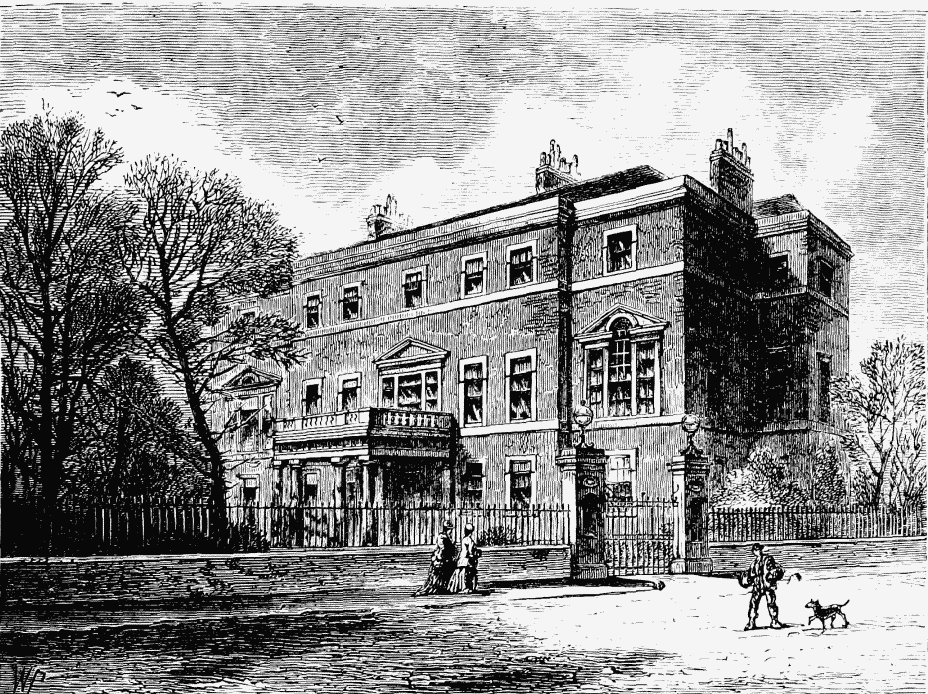
Barton
A fictional cottage located in Devonshire.

Norland
A fictional estate located in Sussex.

Longstaple
A fictional place located in Devonshire, near Plymouth. Lucy's uncle lives in Longstaple as indicated in chapter 22.

Exeter
Exeter is a city in the county of Devonshire, UK. Exeter is located in the Southern region of England, West of Sussex.

The furniture was all sent round by water.
The way England is geographically set up, it would be quicker to send a large, heavy shipment (such as furniture) by boat through the English Channel rather than by land in a carriage. Taking the English Channel would lead to the River Exe, which runs through Exeter, very near to where the Dashwood women's cottage is.

Exeter
"Exeter is located in the Southwest of England. It is situated on the River Exe in the county of Devonshire."(http://www.exeterviews.co.uk/).

Devonshire
A county in southwest England.
Piazza Venezia
Kenyon has likely walked the length of Via del Coros, from his studio.
Union Passage

Above is a postcard that illustrates what the Union-Passage looked like at the beginning of the 19th century (Sanborn, Vic, Jane Austen's World, 2010).
Milsom Street
A street known for its stores and shopping in the 18th century until the present. "Milsom Street became one of the most prestigious shopping areas in the country" (Paul Eanuelli, "The City of Bath as a Character"). 
pump–room

 The Grand Pump-Room at Bath was considered a social meeting place for the upper class (Grand Pump Room, Bath, wiki).
The Grand Pump-Room at Bath was considered a social meeting place for the upper class (Grand Pump Room, Bath, wiki).
Magdalen Bridge
 "This point of the Cherwell has been used for crossing since ancient times. The first known reference to a bridge goes back to 1004 and originally it was probably a wooden trestle construction or a drawbridge. By the 16th century a late medieval stone bridge had replaced the wooden one. This bridge was about 1,500 feet (460 m) long and was formed by 20 arches.
By the 1770s, the stone bridge was too narrow for the increasing traffic, as it did not allow two vehicles crossing safely. In addition to this, the structure was becoming unsound due to the combination of two factors: a generalized lack of maintenance and the negative effects of regular flooding. Eventually some of the arches of the western side collapsed during the floods of February 1772, making the bridge irreparable" (Magdalen Bridge, wiki).
"This point of the Cherwell has been used for crossing since ancient times. The first known reference to a bridge goes back to 1004 and originally it was probably a wooden trestle construction or a drawbridge. By the 16th century a late medieval stone bridge had replaced the wooden one. This bridge was about 1,500 feet (460 m) long and was formed by 20 arches.
By the 1770s, the stone bridge was too narrow for the increasing traffic, as it did not allow two vehicles crossing safely. In addition to this, the structure was becoming unsound due to the combination of two factors: a generalized lack of maintenance and the negative effects of regular flooding. Eventually some of the arches of the western side collapsed during the floods of February 1772, making the bridge irreparable" (Magdalen Bridge, wiki).
Tetbury
"The large parish of Tetbury, comprising a prosperous market town and the small hamlets of Upton, Charlton, Doughton, and Elmestree, lay on the southeast boundary of Gloucestershire, 9 miles south-west of Cirencester" (BHO).
The actual distance between Bath and Tetbury is 20 miles (Google Maps).
the pump–room
A meeting place for upper-class people. Mrs. Allen's favorite place was situated closed to the main entrance of the Roman Baths. It is well-known for the power of its waters. The place is still popular today at tea time thanks to its restaurant ("Jane Austen World").

abbeys
An abbey is "A private residence, school, etc., formerly (part of) an abbey" (OED).
in Edgar’s Buildings
These buildings had prime real estate since they were located so close to Milsom Street, which "is the promenade of the gentlemen and the shopping of the ladies this latter circumstance gives it a splendid variety" (Edgar Pierce, Walks through Bath, 68)

we shall meet them at the rooms.
The “rooms” were a place in Bath, built in 1769 by the architect John Wood the Younger. The building was divided into 4 different rooms and each were assigned a specific activity. It was the place to be for people, where they gather and exchange gossips.
"Their purpose was to be a place for dancing and music" ("National Trust").
Salisbury
Salisbury is located in Southern England. The city was built around Salisbury Cathedral which was founded in 1220. Stonehenge is approximately 8 miles northwest of the city (Encyclopedia Britannica). 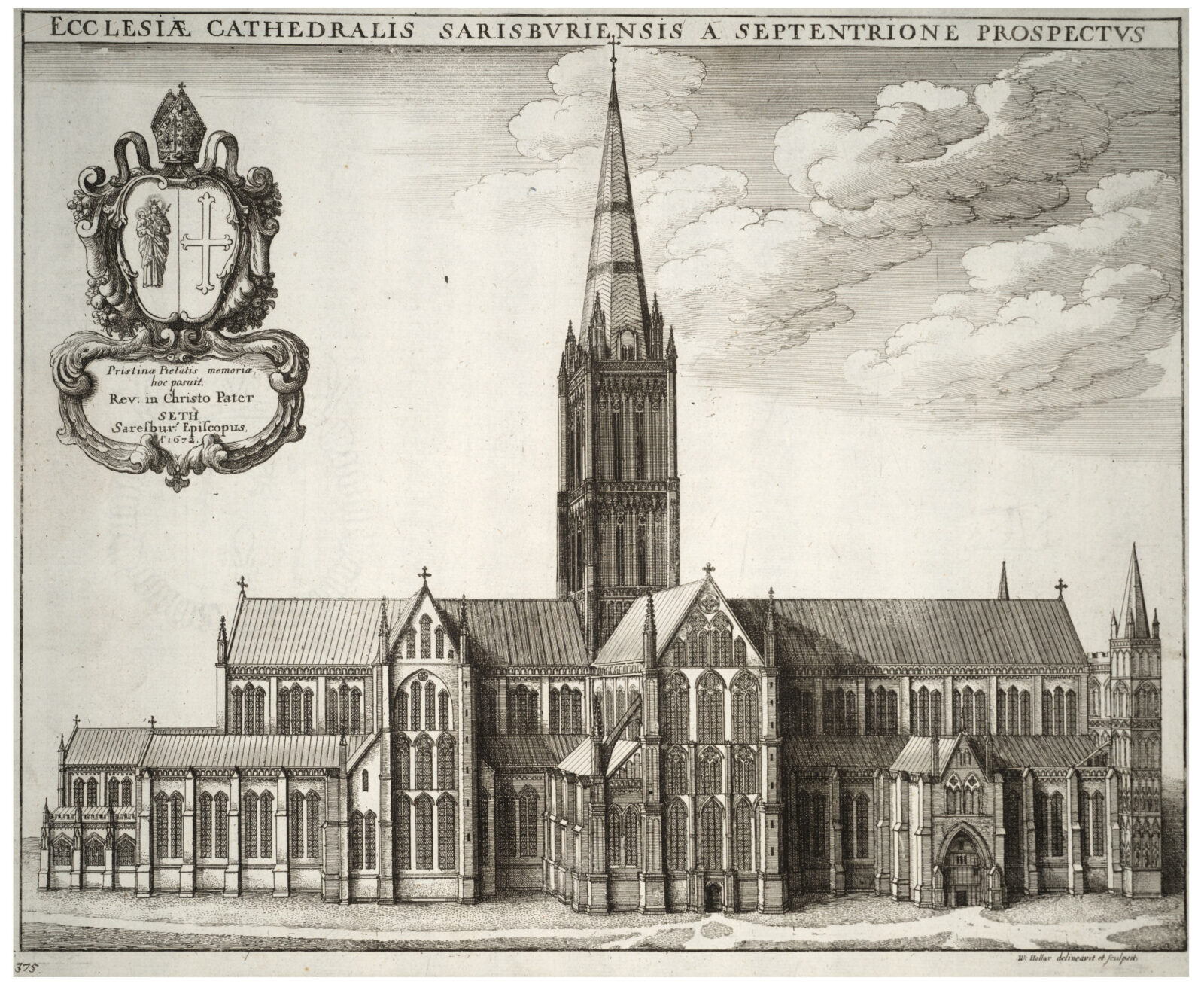 Pictured is Salisbury Cathedral, etched by Wenceslaus Hollar in 1672.
Pictured is Salisbury Cathedral, etched by Wenceslaus Hollar in 1672.
parsonage
"The church house provided for a rector. Also (in later use): the house of any benefice member of the clergy of the Church of England; the residence of any minister of religion" (OED).

Milsom Street
Milsom Street was a very fashionable street in Bath, filled with expensive shops (Janet Todd, Jane Austen in Context, 213). 
Blaize Castle
Blaize Castle -- actually spelled Blaise Castle -- is a structure located in Bristol, UK about thirty miles northeast of Bath. Despite the descriptions in the novel suggesting that it is a genuine Gothic building, Blaise Castle is actually what is referred to as a “Sham Castle”. A “Sham Castle” is, as the name would suggest, a castle built in the architecture of a previous era from when it was actually built. Furthermore, Blaise Castle is not even an actual building: it is nothing more than a facade built by the merchant Thomas Farr in 1766 (Janine Barchas, Matters of Fact in Jane Austen, 78).
It was too dirty for Mrs. Allen to accompany her husband to the pump–room
The pump room -- better known as The Grand Pump Room -- was a building used for upper-class social gatherings and parties in Bath. It was especially popular during Jane Austen’s lifetime (Michael Forsyth, Bath, 68) (Mabel Van Niekerk, The Ancient Roman Cities of Bath and York, 24).
Kingsweston
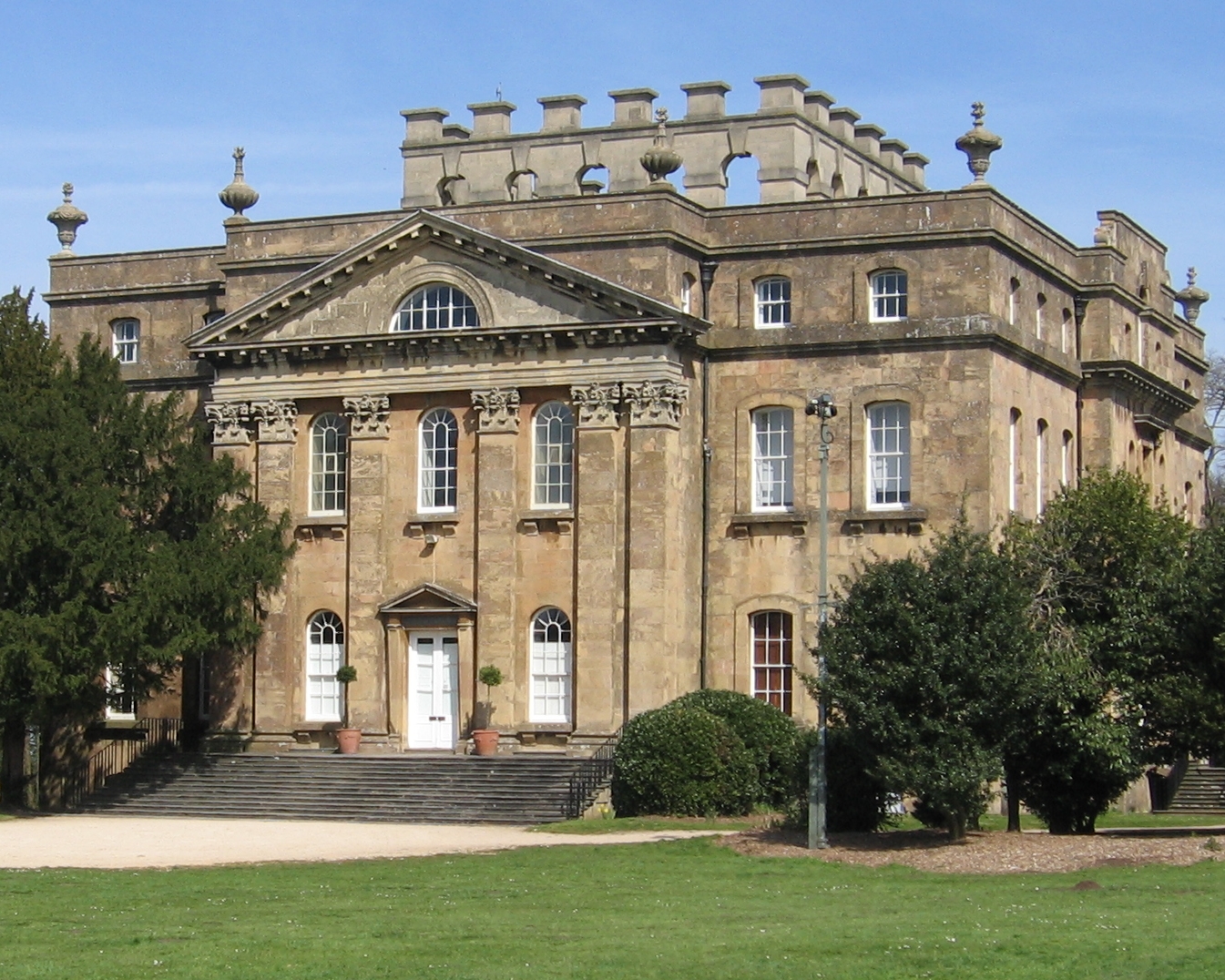
Kingsweston is a historic building in Kings Weston Lane, Kingsweston, Bristol, England. This would have been approximately 18 miles distance from Bath. "The house boasts a plethora of 18th-century features, including magnificent ceilings, marble fireplaces, and a stunning suspended central staircase."
Blaize Castle

Blaize Castle, estbalished in 1766, is an 18th century estate located relatively close to Henbury, which is in Bristol, England. The landmark is currently a museum and popular attraction for Janeites.
pump–room

"The Pump Room in Bath was built in the lower part of the town, and it was where those taking the “cure” would drink copious amounts of the warm spring water in order to effect a cure" (Austenonly). It was the place to be in high society.
Beechen Cliff

Beechen Cliff offered a remarkable view of Bath. This would be what Catherine, Eleanor, and Henry would have witnessed on their outing.
hyacinths
A hyacinth is a bulb shaped flower that has a strong fragrance used in the perfume trade and it has bright purple and blue colored bulbs. "Bulbous plants with bell-shaped six-parted flowers, of various colours, usually drooping..a native of the Levant, of which numerous varieties are cultivated for the beauty and fragrance of their flowers" (OED).
Alps and Pyrenees
 Notice how far the locations that Catherine refers to are from England.
Notice how far the locations that Catherine refers to are from England.
Pulteney Street
The construction of Great Pulteney Street, in 1789, sparked the growth of Bath. It crosses River Avon, adding thousands of residential homes to the city of Bath. It was named, not after it's architect, Thomas Baldwin, but after it's commissioner, Sir William Pulteney.


to take a turn in the Crescent
 "The Cresent" is a prominent set of buildings and houses located in Bath, England. In Austen's day it was oftentimes common to 'take a turn' or take a walk through this neighborhood because the buildings were extravagant and the yards of the houses were beautiful as well.
"The Cresent" is a prominent set of buildings and houses located in Bath, England. In Austen's day it was oftentimes common to 'take a turn' or take a walk through this neighborhood because the buildings were extravagant and the yards of the houses were beautiful as well.